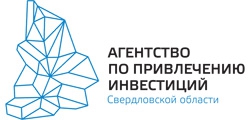- Great Britain
The State Topographic Service of Great Britain opens recruitment for its own academic program
The State Topographic Service of Great Britain opened its graduate program for recruitment in September 2022. There are 16 profiles available in the popular program, which give graduates the opportunity to work on a number of effective projects, helping clients around the world benefit from advanced data and experience in the field of cartography and geodesy.
This program allows graduates to gain experience in government, business and international markets. Graduates will help promote future innovation and the next generation of customer-oriented products and services to influence the future growth of the topographic service.
Outdoor activity in Britain has increased significantly this summer
Data from the UK State Topographic Service on walking, cycling and running show an increase in the number and length of routes in the summer of 2021. The service studied national outdoor habits during June, July, August and September 2021 according to routes that the British public logged and shared on their popular OS Maps app. Data from this small study showed that the average length of a summer walk in the UK is now 12 kilometers - 4 percent more than last year; this summer, just under 890,000 walks were registered, which is 46 percent more than last year; this summer, the number of hiking in the mountains decreased by 36 percent, which suggests that more and more people go for a walk just outside, rather than exploring hilltops or mountain trails; and the total distance in meters that OS Maps users walked this summer was 52% more than last year.
Space data helps the Earth adapt to the challenges of climate change
Satellite data will be used to monitor and map heat in places with the greatest risk of climate change in a new project supported by the UK Space Agency. This project is the result of a collaboration between the National Earth Observation Center (NCEO) and the UK State Topographic Survey, which will provide policy makers with important information to manage the effects of climate change at locations across the UK and beyond. Using NCEO data on the earth's surface temperature obtained by thermal infrared sensors in space, the influence model will help to understand and determine how this data can be effectively applied.
Smart ecology for a Scottish startup
A pioneering Scottish startup is using space-age technology to protect the environment. By monitoring red deer populations from satellites, EOLAS Insight supports wildlife management in rural Scotland.
Founded by entrepreneur Douglas McNeil and supported by the Geovation Scotland Accelerator Program, the company is currently developing innovative ways to help conservationists and wildlife inspectors. Using new technologies, such as artificial intelligence, the company simplifies and reduces the cost for environmentalists to access vital data that can help protect the environment.
EOLAS Insight is one of three companies that have received a place in the well-known Geovation Scotland program, which supports new businesses. The initiative was launched in 2019 to support Scottish entrepreneurs by providing them with access to land and property data, mentoring and funding to develop their young startups.
- Germany
Germany mosaic updated according to Sentinel-2
For the German mosaic compiled from Sentinel-2 data, data for 2018 and 2019, as well as data for 2020, have now been accepted. New in the service are separate layers for individual annual statuses. This means that a certain status can now be displayed without the TIME parameter.
The German Federal Agency for Cartography and Geodesy has developed a procedure for providing remote sensing data on request. For the production of remote sensing, the Federal Administration currently prefers optical satellite image data. Important in this case is the so-called mosaic method. The procedure was created using Sentinel-2 data, funded by the EU, within the framework of the European Earth Observation initiative "Copernicus" and can be used for any set of optical data (including aerial photographs). Using this method, a service is provided by which optical remote sensing data for each area of the Earth can be processed professionally and in accordance with the requirements. This service allows users to integrate pre-processed and prepared remote sensing information for the Federal Republic of Germany into their own existing specialized procedures.
The Federal Agency of Cartography and Geodesy warns of the danger of heavy rain
The map of hazards due to heavy rain is now available on the freely accessible geoportal of the Federal and state governments. The first sub-region in the project "Information Map of the dangers of heavy rains" was North Rhine-Westphalia. This map is an important tool that makes life easier for vulnerable groups of the population. With its help, it is possible to identify and indicate special danger zones within municipalities. The main data for modeling the dangers of heavy rain are, first of all, geodata of federal lands, in particular, a high-resolution digital terrain model and information from the official real estate cadastre. In addition, the calculation includes data from the assessment of heavy precipitation by the German Meteorological Service.
System updates
The EuroRegionalMap (ERM) and EuroBoundaryMap (EBM) European datasets from EuroGeographics have been updated and are available to federal agencies in ERM 2021 and EBM 2021 versions. And the NUTS product family has been expanded to include a scale of 1:5,000,000 (NUTS5000).
- Iran
New season of coastal hydrographic works
By increasing the power of the fleet, coastal hydrography is on the way to further development. To this end, work is currently underway to prepare and launch the organization's vessels under the supervision of the Department of Hydrography and Tides. The preparation and operation of the vessels of the NCC of Iran is carried out under the supervision of the Department of Hydrography and Tides, currently many vessels are under reconstruction, and after its completion, coastal hydrographic work will be carried out at a faster pace in the near future.
The Department of Hydrography and Tides has been responsible for hydrography and monitoring of the surrounding waters of the country since the early 1980s, and several nautical charts have been compiled and offered to domestic and international users.
- Turkey
Cartographic updates and modernization of monitoring stations
Updated the physical and political map of the Balkan countries, as well as the political map of Iraq, published by the General Directorate of Cartography of Turkey. Also, in the period from October 7 to October 15, 2021, work was carried out on the modernization of sea level monitoring stations in Kyrenia and Famagusta, which are operated jointly with the Department of Maps as part of the Turkish National Sea Level Monitoring System.
- Australia
Geochemical results show promising results in the Carrara sub-basin
A new geochemical analysis shows that a previously unexplored area of northern Australia has promising prospects as a new oil and gas province. Geosciences Australia has published geochemical results on the Carrara 1 deep stratigraphic well located in the recently discovered Carrara sub-basin on the Queensland border.
Dr. Andrew Heap, Head of Minerals, Energy and Groundwater Geosciences Australia, said in an interview that this analysis showed that the Carrara sub-basin contains rocks with promising hydrocarbon potential. These results highlight the Carrara sub-basin as a potential new energy province in the Northern Territory and Queensland. It's too early to say how far these rocks extend, but the results are encouraging and give the industry another reason to take a serious look at this unexplored frontier.
- Chile
Military Geographical Institute took part in the webinar "Geographical names"
On Wednesday, November 10, the Military Geographical Institute took part in the webinar "Geographical Names" organized by the National Geographic Information Institute of the Republic of Korea and the Pan American Institute of Geography and History. There, a civil employee of the VGI, a geographer by profession, made a presentation on the topic "Atlas Publication" and spoke about the importance of geographical institutes of Latin America in the development of the atlas, telling about the experience of Chile in the field of atlas publication and the use of technologies in thematic cartography. In addition, the experience of developing and distributing a geographical atlas for the augmented reality education system, developed by the University of Chile and the Center for Tactile Cartography of the Metropolitan University of Technology, was shown in detail.
This event was attended by almost forty Latin American and Korean specialists working in the field of geosciences, public, private and scientific circles in order to talk about the work related to geospatial information and geographical names carried out in the Republic of Korea and other participating countries of the webinar.
- Argentina
The National Geographic Institute of Argentina attended the debate day "Argentina 2030: Challenges of Science and Technology"
On Monday, November 8, the Kirchner Cultural Center hosted a debate day "Argentina 2030: Challenges of Science and Technology" organized by the Ministry of Education and the Ministry of Science, Technology and Innovation. The National Geographic Institute attended this key event to pay attention to the problems that people are forced to face and to emphasize the place of science and technology in building the future of Argentina. The meeting was attended by more than 800 people, including researchers, who discussed the problems that our country must face in order to overcome structural problems. It was also considered the definition of production and technology development programs to support a productive and inclusive project with the expansion of rights, the creation of professional development programs with federal and balanced development.
This agenda, as part of the creation of a collective national plan in the field of science, technology and innovation until 2030, should include all scientific and technological institutes, universities, research and development work in the manufacturing sector, as well as economic entities and society as a whole.
Principles and recommendations for determining the spelling of geographical names of the Argentine Republic
As part of the mission entrusted to the National Geographic Institute, as the national body responsible for the official representation of the national territory and the development of a regulatory framework for its implementation, a new document on principles and guidelines for the definition of geographical names of the Argentine Republic has recently been developed.
This activity is integrated into the process of normalization of geographical names carried out by the Institute as the national body responsible for the management of geospatial information in the Argentine Republic.
Based on the materials of: JSC "Roscartography"











